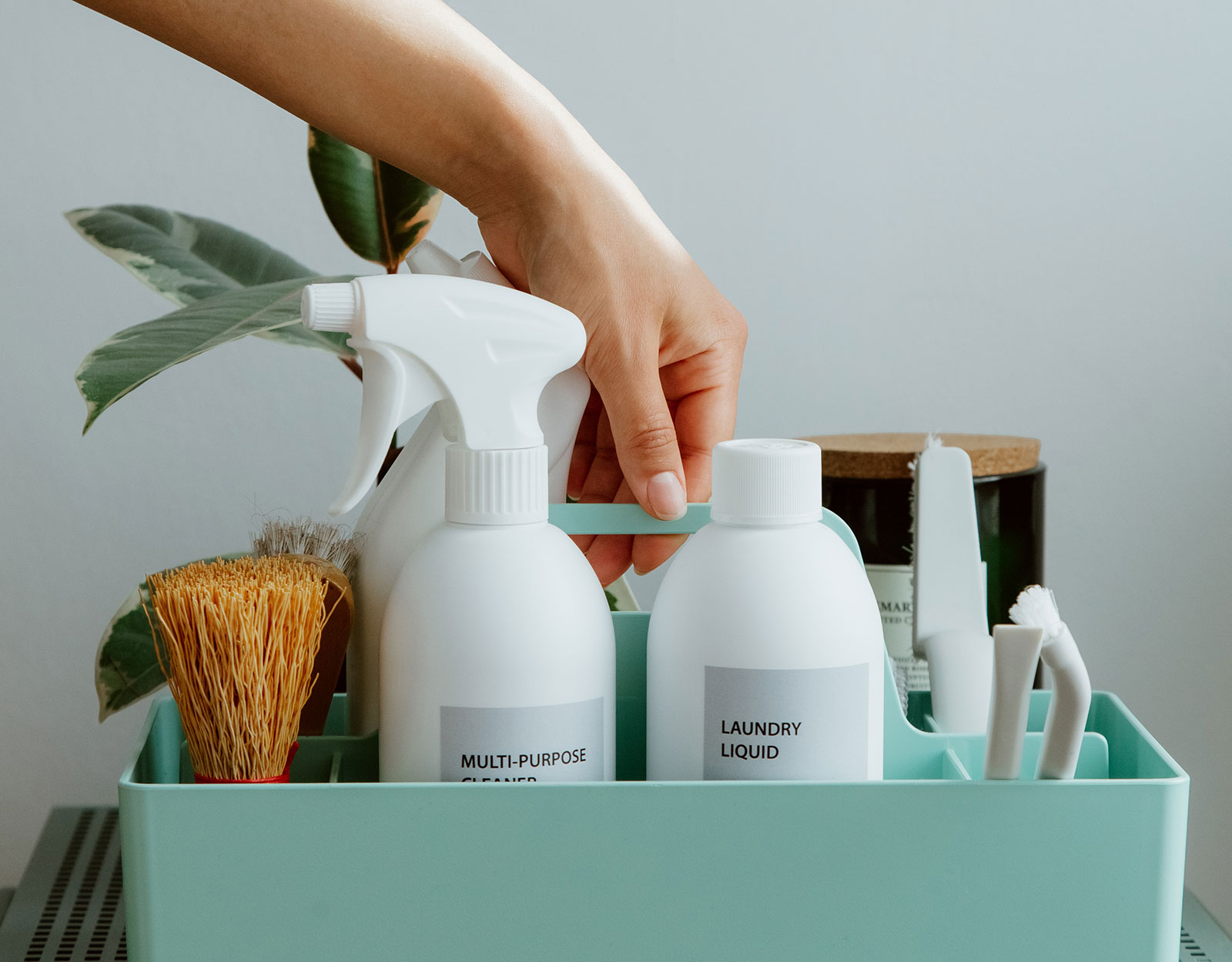How to reduce toxins in your home

My healing journey began five years ago, when I was diagnosed with Parkinson’s. I started my quest by making my health priority one, and learning all about Parkinson’s and what I can do to support my health. I focused on the things I could control, like exercise, nutrition, mindset, and creating a wonderful support team around me. I realized it’s a process and it was important to be loving and gentle with myself.
One of the things I learned in my research was how our environment affects our health. Unfortunately, we live in a world where chemicals are used in many of everyday products. Initially, it felt a bit overwhelming, but I started by taking one step at a time: I started with the pantry, then moved to the cleaning closet, then to our bathroom cabinets. My goal was to find cleaner self-care products and get rid of the toxic ones.
Then, five months ago, something new emerged: I discovered a rash on my stomach and back. I had no idea what caused it. I ended up at urgent care and was told by a doctor told me that I’d had an allergic reaction to something I ate or a product I put on my skin, like a lotion. He told me an allergist could help me figure out what caused it.
At the allergist’s, I embarked on a patch test system where I sampled all the products I use each day. It was a long process but ended up in the end to be very helpful. I was really surprised about how many products I use every day on my body. Think about it: you shower, soap, shampoo and conditioner, you towel off, laundry detergent, deodorant, make-up, lotion . . . and that’s just the start of your day!
After my three-day long patch test ended, I found out I was allergic to ten of the products I’ve been using every day. The common denominator was the ingredient fragrance. Fragrance, on an ingredient list, is not technically an individual ingredient or chemical but rather an umbrella term that refers to all the compounds and chemicals that comprise a product’s fragrance. So, by law, companies can use lots of chemicals under the name fragrance. Who knew?!
I took this new learning and my list of ten products I was allergic to, and one by one, replaced a product with a new product that was fragrance or scent free. Reading the list of ingredients was priority one. Boy, what a learning curve that was! I’m happy to report that after replacing those products with fragrance free products my skin is 100 percent happier and I’m rash free.
Here’s a few ways I cleaned out toxins from our home.
- Eat organic. Lots of fruits and vegetables are loaded with pesticides and chemicals. Opting for organic can ensure your greens are healthier and cleaner. Check out the Environmental Working Group website: www.ewg.org. Every year this group releases a list of the twelve fruits and vegetables that are most likely to have toxic pesticide residues – the Dirty Dozen. These are the twelve fruits and vegetables you should buy organic if you don’t have the budget to go 100 percent organic in the kitchen.
- Kick the plastic water bottle habit. For water on-the-go, get a reusable water bottle, like stainless steel or glass.
- Detox your food storage. Most people use plastic Tupperware containers or aluminum foil, but they are full of chemicals that can leach into your food. Instead, try glass food containers or mason jars.
- Filter your water. A water filtration system is an investment, but it’s also a sure-fire way to remove heavy metals, chemicals, rust, and sediments from your water.
- Switch to non-toxic cleaning products. Cleaning products contain some of the most toxic ingredients. The good news is that there are a lot of great non-toxic cleaning products, such as baking soda, vinegar, essential oils, and lemon. One of my favorite websites to find cleaner products is called Gimme the Good Stuff. Check it out and start leaning more about clean products. www.gimmethegoodstuff.org
As I researched cleaner products, I also came across Daron Olien’s book called Fatal Conveniences. It was very eye-opening and explained all about the toxins in our products and our environment. The best part is, he gives solutions you can take to help substitute dirty products for cleaner ones. I’ll be honest with you: I was overwhelmed after reading the book, but knowing that I don’t have to change everything all at once gave me some relief. Change doesn’t happen overnight, and I remind myself it’s a process. The good news is that we have wonderful websites and books out there to help in our journey to make our homes safer from chemicals and toxins.